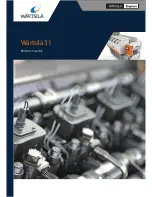
2
11
15. Install oil fill cap into valve cover. Tighten oil fill cap
securely, but do not over-tighten.
NOTE:
If using the dipstick oil plug, the foregoing
instructions still apply, but with the following
differences: screw plug completely into bore (
E
)
before checking if engine oil level is at or near the
high mark (
F
), and if adding oil, use a funnel and a
short length of plastic tubing (
G
) for best results.
16. Install spark plug wire onto spark plug terminal.
17. Start and run engine for one minute. Check for oil
leaks while engine is running.
18. Dispose of used oil at a proper waste disposal or
recycling center.
Clean Muffler, Rewind Starter Finger Guard,
and Controls
NOTE:
Proper cleaning reduces the risk of engine
damage due to overheating and ignition of accumulated
debris.
NOTE:
Avoid using high pressure compressed air, which
can force dirt and debris deeper into engine cavities and
crevices. Do not use a pressurized water spray as water
intrusion can contaminate both oil and fuel systems and
lead to corrosion.
1. Remove spark plug wire from spark plug terminal.
Secure spark plug wire to prevent unintentional
contact with spark plug terminal.
2. See Figure 3. Remove hex flange nut (
A
) to release
trim panel (
B
) from inside carburetor mounting stud.
3. Remove hex flange screw (
C
) to release trim panel
and air cleaner base (
D
) from control bracket.
4. Remove breather hose (
E
) from port on air cleaner
base.
5. Remove two hex flange nuts (
F
) to release air cleaner
base from carburetor mounting studs.
6. See Figure 4. Remove three hex flange screws to
release rewind starter (
A
) from blower housing.
NOTE:
Note orientation of the rewind starter before
removal.
7. Thoroughly clean rewind starter finger guard, flywheel
fan (
B
), and muffler (
C
). Carefully clean governor link,
springs, and controls (
D
). Proceed as follows:
A. Remove all loose debris by hand.
B. Remove dust and dirt with a soft bristle brush and
a portable hand held vacuum.
C. Gently scrape away stubborn accumulations of
dirt and other deposits using a plastic putty knife
or stiff bristle brush.
D. Apply a light solvent to bristle brush to loosen and
remove grit and oily residue, if necessary.
3
4
8. Verify that all combustible debris is removed from
area around and behind muffler.
9. Verify that governor link, springs, and controls move
freely without sticking, binding, or contacting blower
housing or fuel tank.
10. Orient rewind starter as noted before removal.
Not for
Reproduction
Summary of Contents for Vanguard 10V300
Page 2: ...N o t f o r R e p r o d u c t i o n...
Page 6: ...N o t f o r R e p r o d u c t i o n...
Page 8: ...N o t f o r R e p r o d u c t i o n...
Page 30: ...3 24 N o t f o r R e p r o d u c t i o n...
Page 42: ...4 36 N o t f o r R e p r o d u c t i o n...
Page 50: ...5 44 N o t f o r R e p r o d u c t i o n...
Page 99: ...8 93 136 N o t f o r R e p r o d u c t i o n...
Page 104: ...8 98 N o t f o r R e p r o d u c t i o n...
Page 109: ...9 103 This page is intentionally left blank N o t f o r R e p r o d u c t i o n...
Page 110: ...9 104 This page is intentionally left blank N o t f o r R e p r o d u c t i o n...
















































